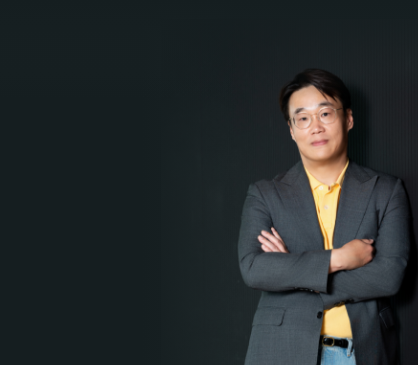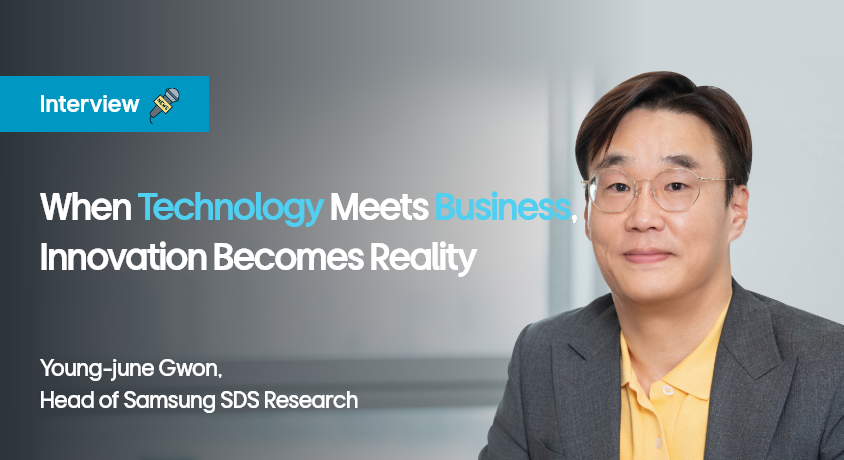
Key Points Summary
- Samsung SDS Research Leading Technology with AI, Cloud, and Security Teams - Under the leadership of Young-june Gwon, Samsung SDS Research has achieved groundbreaking results in three core areas: Korean Large Language Models (LLMs), Post-Quantum Cryptography (PQC), and GPU Cloud technology.
- Research Culture Pursuing Balance Between Technology and Business - With the vision of "a research institution where business and technology go hand in hand," Young-june Gwon fosters a research culture that values the autonomy of researchers with diverse academic backgrounds, encouraging creativity and challenges rather than mere outcomes.
- Ranked #1 IN KorQuAD 1.0/2.0 and PQC Adopted as National Standard - Samsung SDS Research has achieved top results in Korean machine reading comprehension evaluations, surpassing human performance. Furthermore, it has successfully developed cryptographic technologies to prepare for the quantum computing era, earning recognition for its technological expertise.
We had the opportunity to meet Young-june Gwon, Head of Samsung SDS Research, who has worked with global companies and research institutions and now leads Samsung SDS Research. With a master's degree from Stanford and a Ph.D. from Harvard, Young-june Gwon has gained extensive experience in various fields, including Qualcomm, MIT Lincoln Laboratory, and startups. Currently, he is spearheading cutting-edge research in AI, cloud, and security at Samsung SDS Research.
Young-june Gwon, recognized for his academic contributions with over 4,700 citations, leads Samsung SDS Research with the vision of fostering "a research institution where business and technology go hand in hand." We explored the achievements of Samsung SDS Research in key future technologies like Korean LLMs and PQC, as well as the future of Korean IT technology envisioned by Samsung SDS with Young-june Gwon.
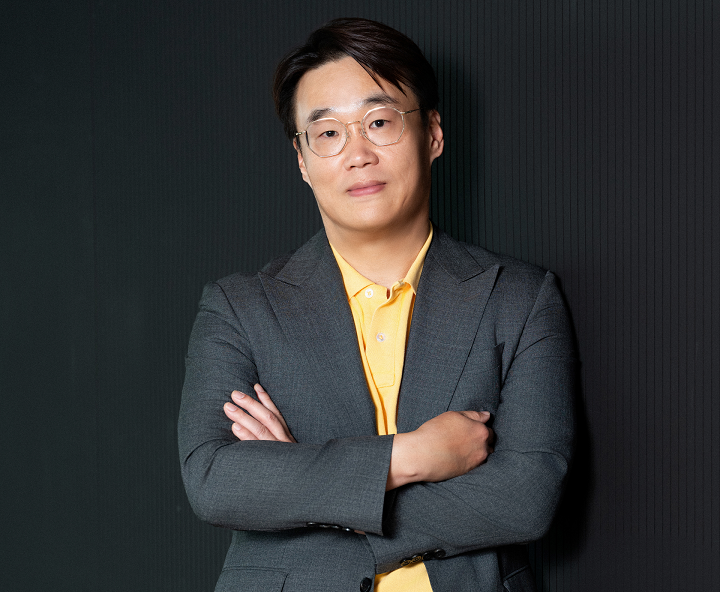 [Figure 1. Young-june Gwon introducing Samsung SDS Research]
[Figure 1. Young-june Gwon introducing Samsung SDS Research]
" The landscape of research has changed with the advent of AI "
AI has now become a very familiar presence in our lives, but we imagine it was quite different when you first started your research. If there were any turning points in the development of computer science regarding AI, when would that have been?
AI was first termed at the Dartmouth Conference in 1956 by Professor John McCarthy, but the real revolution occurred in the 2010s. Around 2005, researchers like Geoffrey Hinton, Yoshua Bengio, and Yann LeCun demonstrated the potential of deep learning, and from 2010 onwards, the revolutionary advancements in GPUs fundamentally changed the game. At that time, as someone involved in network and communication research, I could feel these changes up close.
A particularly pivotal moment came when Google published the paper "Attention is All You Need," introducing the transformer architecture. This breakthrough led to the emergence of models like BERT (encoder-based) and GPT (decoder-based), driving rapid advancements in natural language processing. Around 2014-15, after completing my Ph.D. at Harvard, I joined MIT Lincoln Laboratory's Human Language Technology group, where I focused on natural language processing and speech recognition. This experience allowed me to witness firsthand the revolutionary changes in the field—a tremendous fortune for me as a researcher.
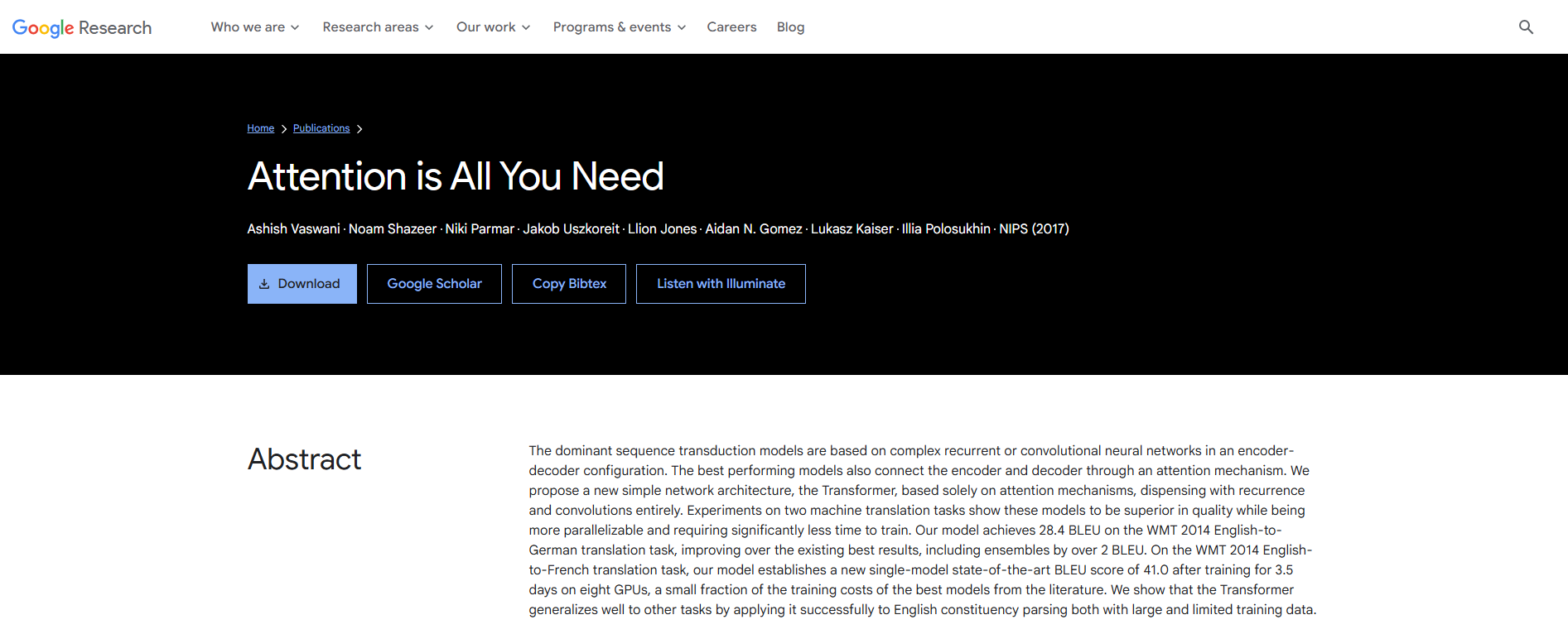 [Figure 2. A page from “Attention is All You Need” on Google Research]
[Figure 2. A page from “Attention is All You Need” on Google Research]
Initially, you focused on the field of communications, but was there a specific reason you shifted your interest to AI?
When researchers began demonstrating the potential of deep learning between 2005 and 2010, I was pursuing my Ph.D. at Harvard. My advisor, Professor H.T. Kung, was a leading expert in network research, but he supported and encouraged me to explore new research areas. During this period, advancements in GPU technology made it possible to implement deep learning, which had previously only been theoretical. As a result, many researchers in the communications field began applying AI algorithms, and I naturally joined this trend.
What projects did you work on at MIT Lincoln Laboratory? We’re interested in hearing how your experience there has influenced the direction of Samsung SDS Research.
At MIT Lincoln Laboratory, I was part of the "Human Language Technology" group. Originally, Lincoln Laboratory was strong in speech recognition technology, but during my time there, the scope of research was expanding into natural language processing. We focused on technologies like Speech-to-Text (STT) and language models that could understand and analyze the resulting text. Being at the forefront of the synergy between these two technologies gave me a sense of the possibilities that lay ahead for the future.
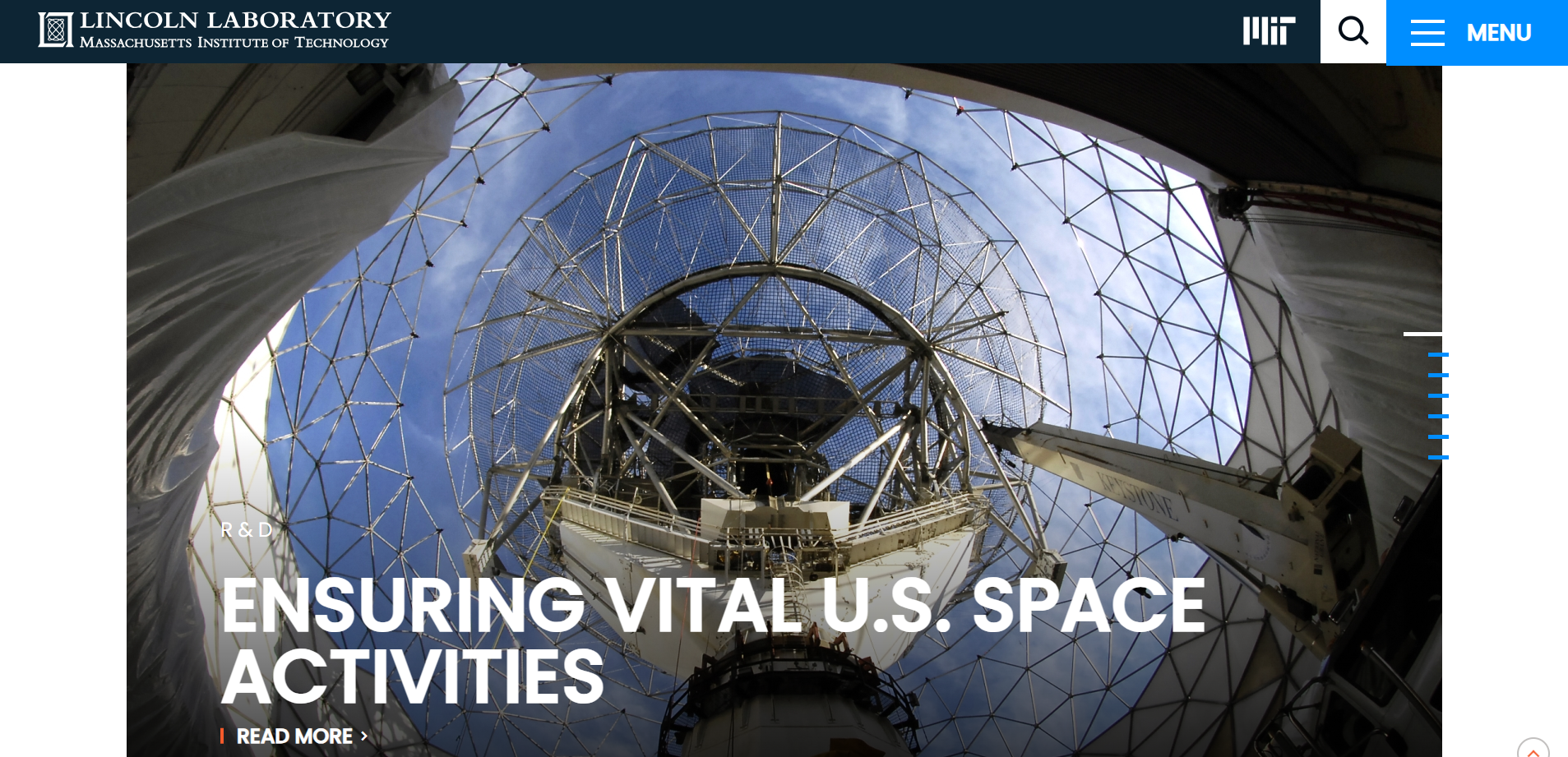 [Figure 3. MIT Lincoln Laboratory Homepage]
[Figure 3. MIT Lincoln Laboratory Homepage]
"I chose Samsung SDS Research to focus on real-world business application"
What motivated you to join Samsung SDS Research in Korea, leaving behind your career in the U.S.?
I was intrigued by the potential synergy that could emerge from blending the research environment I experienced in the U.S. with Korea's rapid execution capabilities, the agility of startups, and the structured systems of large corporations. Above all, I was eager to transition from academic research to applying technology in real-world business contexts.
What were your main responsibilities after joining Samsung SDS?
Upon joining SDS, my initial project involved developing 'Brightics,' a solution tailored for machine learning and deep learning. I also spearheaded the AI Advanced Lab and the SAIDA Lab, which focused on StarCraft AI research. In 2020, at the introduction of our CEO, I had the opportunity to speak with Professor Tae-seung Lim from Sungkyunkwan University, who emphasized the rising importance of AI. This, along with other factors, inspired me to delve into natural language processing (NLP) research in earnest. Reflecting on this period, it marked a pivotal moment when Samsung SDS's NLP research began to gain significant momentum.
What areas is Samsung SDS Research focusing on, and how is the organization structured?
Samsung SDS Research is structured around three main pillars: AI, cloud, and security. Each domain is supported by specialized research organizations, with a systematic process spanning from research and technology strategy to productization. For instance, within the AI Research Team, there are diverse labs with distinct characteristics, such as the AI Advanced Research Lab and the Reinforcement Learning Lab, which collaborate seamlessly. Currently, there are about 200 researchers working together at Samsung SDS Research.
" We achieved first place in KorQuAD"
What is the most impressive achievement or project you’ve recently worked on at Samsung SDS research?
The most impressive achievement is making significant progress in natural language processing (NLP). (laughs) Since we began focusing on NLP research in 2020, we’ve seen rapid advancements. Samsung SDS Research secured first place in both KorQuAD 1.0 and 2.0, a Korean question-answering dataset, and also achieved first place in HotpotQA, an English-based dataset. What’s particularly meaningful is that all these achievements were driven by the voluntary ideas and initiatives of our internal researchers, not by any external pressure.
What is KorQuAD(Korean Question Answering Dataset)?
KorQuAD is a Korean question-answering dataset designed for natural language understanding (NLU) training. Built on reliable data extracted from Wikipedia, it is used for training and validating machine reading comprehension AI models. KorQuAD 1.0 features approximately 70,000 question-answer pairs, while version 2.0 expands to over 100,000 pairs, incorporating enhancements likes table and list-based information. Machine reading comprehension is a natural language processing technology that identifies the answer region within a given passage based on a specific question. It is a foundational component of automated question-answering systems. Evaluations are conducted using exact match (EM) rate and F1 score, which considers precision and recall. In 2020, Samsung SDS's AI model achieved an EM score of 73.51 and an F1 score of 86.56 in KorQuAD 2.0, surpassing human average performance for the first time (human average: EM 68.82, F1 83.86).
 [Figure 4. Official Homepage for KorQuAD 2.0]
[Figure 4. Official Homepage for KorQuAD 2.0]
We are also making significant strides in the field of quantum-resistant cryptography (PQC). Our PQC encryption technology, particularly the Samsung SDS AIMer (Affine Interleaved Mersenne function) algorithm used for digital signatures, was selected through the KpqC (Korean Post-Quantum Cryptography Standard) national competition. This recognition highlights that our cryptographic algorithms have reached a level suitable for practical commercialization.
What is Quantum-Resistant Cryptography (PQC)?
Quantum-resistant cryptography (PQC) is designed to withstand attacks from quantum computers. Widely used traditional public key cryptosystems like RSA and ECC rely on the difficulty of integer factoring or discrete logarithm problems, but these can be easily decrypted by Shor's algorithm, a quantum algorithm for factoring integers. PQC addresses this challenge by developing encryption methods based on mathematical problems that remain unsolvable even for quantum computers, such as lattice-based, hash-based, and code-based cryptography. In 2022, the U.S. NIST announced its first PQC standard candidate, marking a pivotal step toward ensuring national cybersecurity in the quantum era.
As Head of Samsung SDS Research, we believe you play a crucial role in bridging cutting-edge research with Samsung SDS's commercial offerings. How are your research outcomes being applied to Samsung SDS's business?
When I first assumed the role of Head of Samsung SDS Research, my primary focus was on 'how to contribute to the business'. Initially, our approach was to respond to requests from Business Divisions, but over time, we’ve transitioned toward a more proactive strategy. Today, Samsung SDS Research is transforming into a 'technology-driven' model, leading the development of advanced technologies and empowering Business Divisions to create innovative products and services.
Notable examples include using AI models to support customer service automation and security technologies to enhance the security level of smart factories. Recently, we received feedback that our technical support played a decisive role in securing a major financial project. Samsung SDS Research is not just an R&D organization; it is a strategic entity that actively contributes to business success.
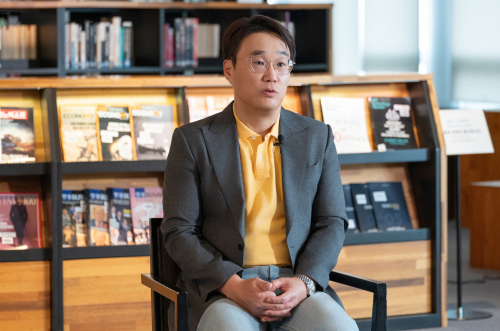 [Figure 5. Young-june Gwon discussing achievements driven by AI models.]
[Figure 5. Young-june Gwon discussing achievements driven by AI models.]
"Korean LLM, PQC and RDMA"
What are the technology areas and models that Samsung SDS Research aims to lead in the future?
Based on our three focus areas, we can outline the following: In the AI domain, our primary goal is to secure a top-tier Korean-language LLM model. We achieve this by developing LLM models in-house and fine-tuning and customizing external models to maximize their performance. In the security domain, we aim to establish ourselves as a technical leader in quantum-resistant cryptography (PQC), which is expected to become commercially viable soon, and in the cloud domain, we focus on developing cloud platforms optimized for AI workloads.
Particularly in the realm of GPU clouds, one notable technology is RDMA (Remote Direct Memory Access). RDMA enables distributed GPU nodes to share memory over a network, and Samsung SDS is conducting pioneering research in this field. Recently, we have begun applying our networking technology, CORN (Cloud Optimized RDMA Networking), to RoCE (RDMA over Converged Ethernet), which has started its international standardization process.
These technologies are being integrated into Samsung SDS's GPUaaS (GPU as a Service) offerings, significantly reducing communication latency between GPUs during large-scale AI model training and dramatically enhancing processing speeds.
What is GPUaaS(GPU as a Service)?
GPUaaS(GPU as a Service) is a cloud-based service that enables users to access high-performance GPU resources on demand. Samsung SDS's GPUaaS leverages the latest GPUs, such as NVIDIA H100 and A100, in large-scale clusters to deliver the computing power needed for AI model training and inference. This allows companies to efficiently manage large-scale AI workloads without the need to invest and manage expensive GPU hardware, paying only for the resources they use.
Since you highlighted quantum-resistant cryptography (PQC) as a key focus area in Samsung SDS Research, it’s clear that security and AI are becoming increasingly interconnected.
Yes, AI and security have become indispensable to each other. As AI becomes more advanced, security threats also grow more sophisticated, making AI-driven security solutions increasingly essential. AI technologies are already being applied in various security domains, including intrusion detection, code analysis, and threat prediction. Particularly, with the advent of quantum computing era, traditional cryptographic systems could be rendered obsolete, underscoring the critical need for PQC development.
Therefore, in Samsung SDS Research, we focus not only on 'AI that excels in security' but also on 'how to use AI securely.' This includes addressing vulnerabilities in AI models, countering attacks like prompt injection—where input prompts are manipulated to induce unintended behavior from LLMs—and data poisoning, where training data is altered to compromise the model. Additionally, technologies for verifying the integrity of AI-generated content are becoming increasingly vital.
Especially, in enterprise environments, where reliability and expertise are paramount, these technologies are especially crucial. To address corporate challenges effectively, it’s essential to combine advanced technology with ethical, economic, and cultural considerations. I believe Samsung SDS Research is well-equipped to tackle these complex challenges.
What are your reasons for believing that Samsung SDS Research possesses such capabilities?
Several factors contribute to this belief, but I believe the primary reason is the diverse talent pool within Samsung SDS Research. Our research institution includes experts not only in computer science but also in fields such as mathematics, physics, statistics, and linguistics. This diversity enables us to approach problems from multiple perspectives and evaluate technologies holistically. For instance, when traditional machine learning methods encounter limitations, insights from physics-based modeling can serve as breakthrough. As Head of Samsung SDS Research, I witness the immense value of this diversity on a daily basis.
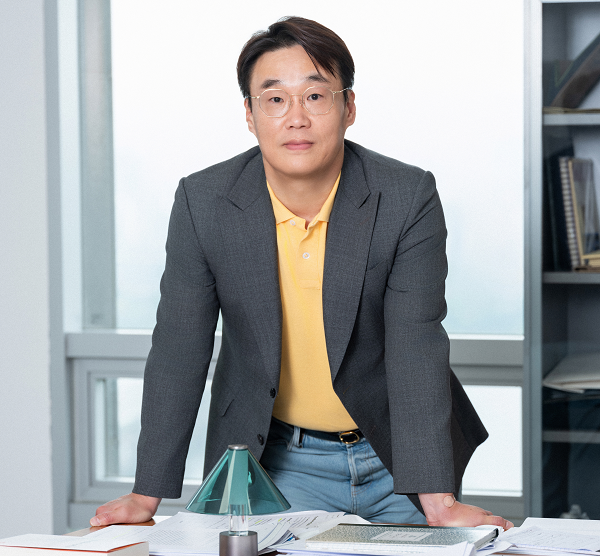 [Figure 6. Young-june Gwon posing for a camera in front of his work desk in his office]
[Figure 6. Young-june Gwon posing for a camera in front of his work desk in his office]
"Failure is an inherent part of research"
As the leader of Samsung SDS Research, what are the core values or leadership principles you prioritize?
I believe in a leadership style that balances autonomy and efficiency. My role is not to simply issue orders but to create an environment where team members can make independent decisions and take action. I see myself as someone who sets the stage and supports from behind, rather than directing from above. In a research organization, creativity is essential, and without autonomy, new ideas cannot emerge.
For this reason, I focus on designing systems that enable researchers to work effectively. I delegate research authority to team leaders and lab heads, while supporting them and the researchers to foster autonomy and accountability. In such an environment, researchers can challenge themselves without fear, learn from failures, and ultimately achieve greater results.
I heard you aim to foster a research culture that embraces failure rather than fears it. How does Samsung SDS Research define and address 'failures'?
We need to embrace the perspective that failure is an intrinsic part of research. I don’t evaluate research outcomes solely based on metrics; I also value "the extent to which new ground was broken." Therefore, even if a research project fails, I encourage documenting the process and using it as a foundation for the next step. I see failure as a byproduct that anyone can encounter at any stage of research.
If we can derive lessons from that failure, it is a process worth pursuing. Let me share an experience from my time at a startup. With other senior alumni from my university, I co-founded a fabless semiconductor startup focused on developing mobile chips for Mobile WiMAX (IEEE Standard 802.16m), which was emerging as a 4G technology at the time. Our chip was released early in the WiMAX commercialization process and performed well, but the WiMAX standard itself failed to gain traction. The global financial crisis triggered by the U.S. subprime mortgage crisis hit, and ultimately, WiMAX was overtaken by LTE.
From this experience, I learned that technological superiority alone is insufficient to ensure success. Marketing, business strategy, and timing must all align for success, and technology alone is not enough. Those countless sleepless nights in the lab provided invaluable insights that have profoundly shaped my leadership approach at Samsung SDS Research today. Even now, one of the phrases I frequently emphasize is, "Failure serves as preparation for the next research endeavor”.
"Samsung SDS Research where business and technology go hand in hand"
What is the vision for Samsung SDS Research moving forward?
It is a "research institution where business and technology go hand in hand." Technology should not remain a mere impressive demo; it must address real customer challenges and understand the language of the market. Samsung SDS has a structure that enables us to bridge the gap between innovation and practical application, integrating technology into actual business practices rather than confining it to the lab. I believe the research institution should be a place that transforms the potential of future technologies into tangible realities within this framework.
Technologically, our goal is to develop a robust LLM optimized for Korean and establish global leadership in the PQC field within the next 3-5 years. Business-wise, we dream of and are actively preparing for Samsung SDS's cloud and AI services to achieve global competitiveness by leveraging these advancements.
If you could share one message with junior researchers or prospective researchers interested in Samsung SDS Research through this interview, what would it be?
Research institution is not a place to find answers, but to ask better questions. It’s okay if you don’t know everything right now. What’s important is the sincerity behind the question, "What am I curious about, and what do I want to learn?" In the field of AI, it’s not just technical expertise that matters, but also philosophical reflection on developing human-centered solutions. I believe AI should be approached as a tool to enhance human capabilities, not as a technology that replaces them.
Samsung SDS Research is a place where people from diverse backgrounds and disciplines come together to learn and grow. We don't merely chase the latest technologies; we focus on the meaningful impact these advancements can have on business and society. If you’re driven by authenticity, resilience, and a commitment, you’ll find a natural fit here. We welcome passionate individuals who want to embark on a journey of balancing technology and business while pursuing human-centered values.
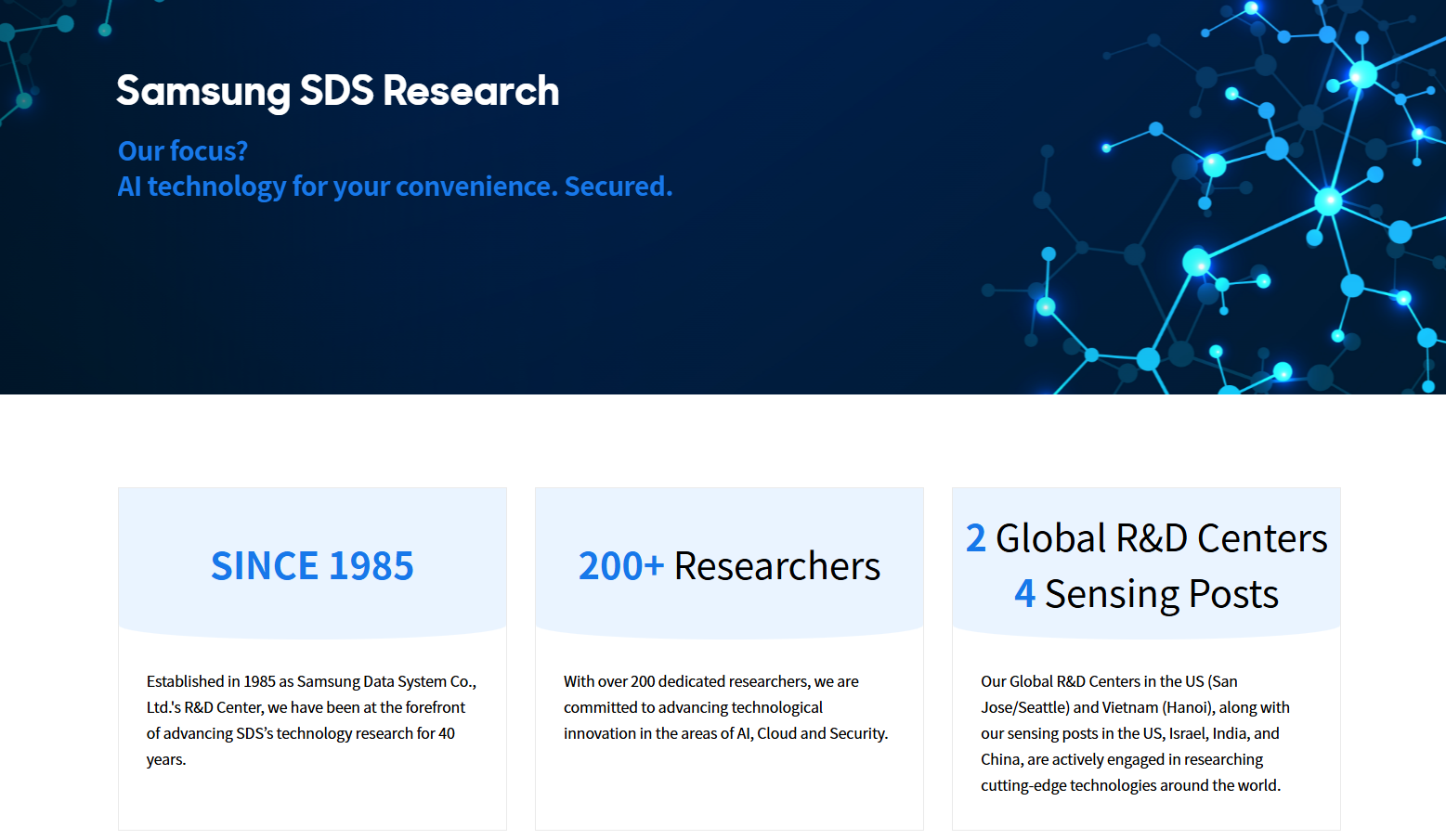 [Figure 7. Main Page Introducing Samsung SDS Research]
[Figure 7. Main Page Introducing Samsung SDS Research]
Interested in learning more about Samsung SDS?
Check out our interview with Tae-hee Lee, Head of AI Research Team at Samsung SDS Research, who is pioneering advancements in enterprise AI development!
